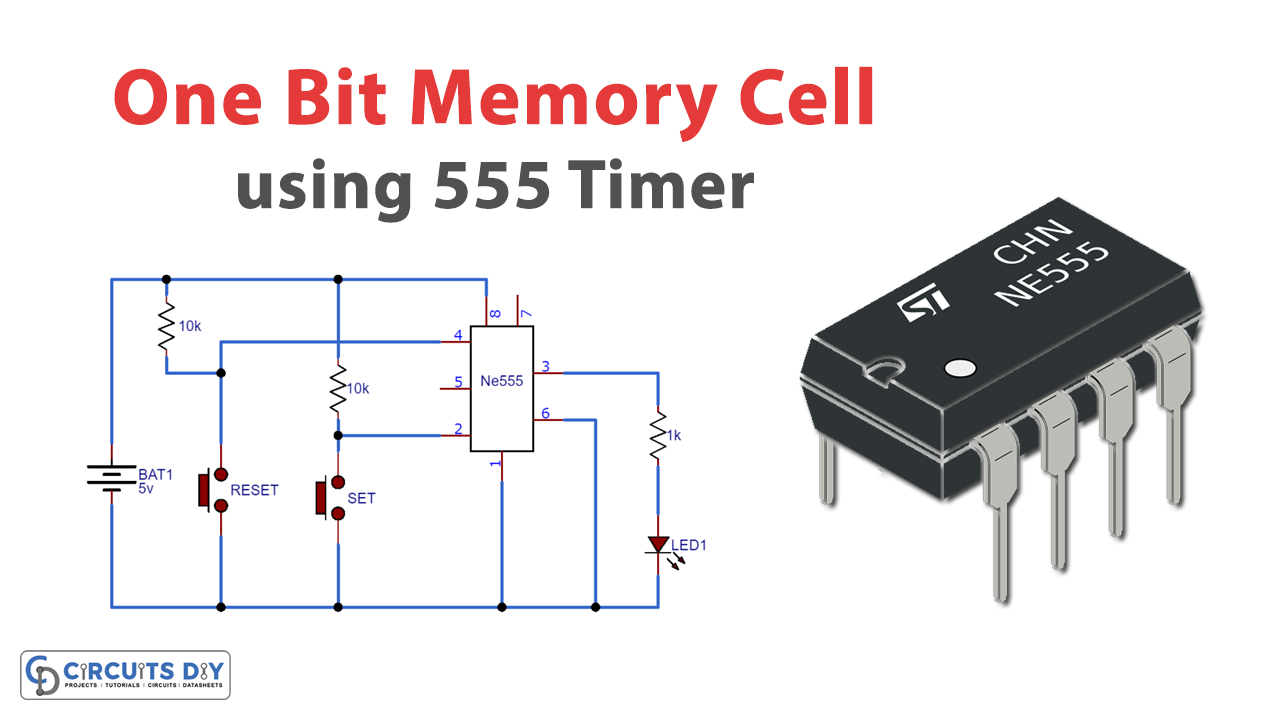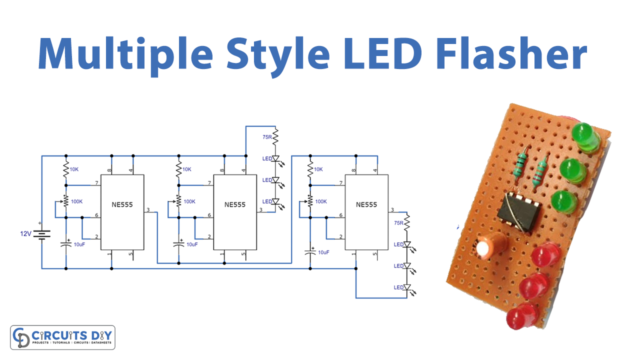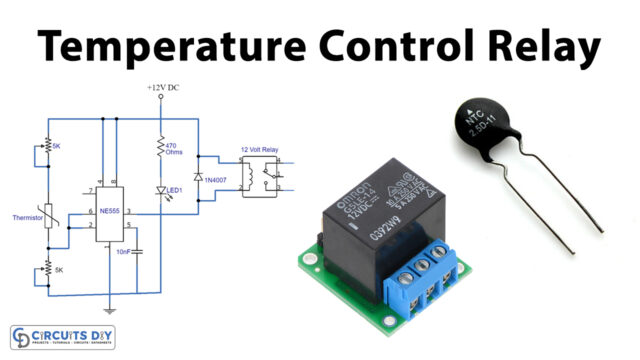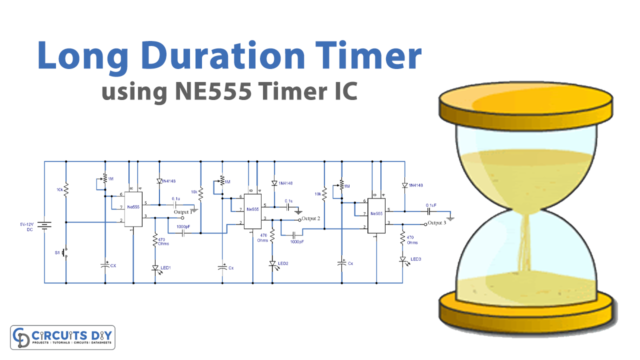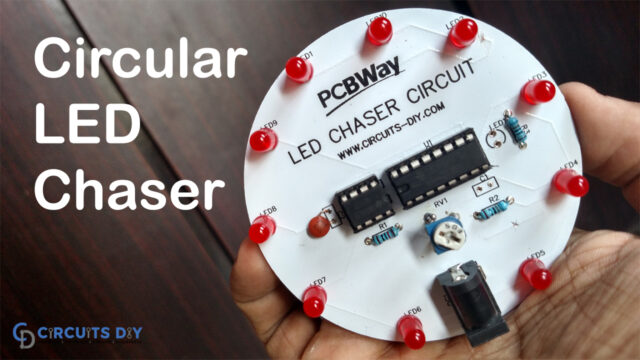In this example, a one-bit memory cell circuit is designed by using a 555 Timer IC. One Bit memory cell is also called a basic bistable element. All the embedded system uses memory for storing data. In digital Electronics memory and memory cells plays a very significant role.
These memory cells are made up of flip-flops. This stores the data in the form of bits. The single flip-flop stores the single bit. So if one wants to store the number of bits, the number of flip-flops can be increased. The memory cell either stores the program or accesses the program. The memory cell is an electronic circuit that stores the logic high or low in a binary form.

Hardware Components
The following components are required to make One Bit Memory Cell Circuit
| S. No | Component | Value | Qty |
|---|---|---|---|
| 1. | Breadboard | – | 1 |
| 2. | Battery | 9v | 1 |
| 3. | Connecting Wires | – | 1 |
| 4. | IC | NE555 Timer | 1 |
| 5. | Resistors | 10k, 1k | 2, 1 |
| 6. | Capacitor (if required) | 100uF | 1 |
| 7. | LED | 5mm | 1 |
| 8. | Push Buttons | – | 2 |
555 IC Pinout

For a detailed description of pinout, dimension features, and specifications download the datasheet of 555 Timer
One Bit Memory Cell Circuit
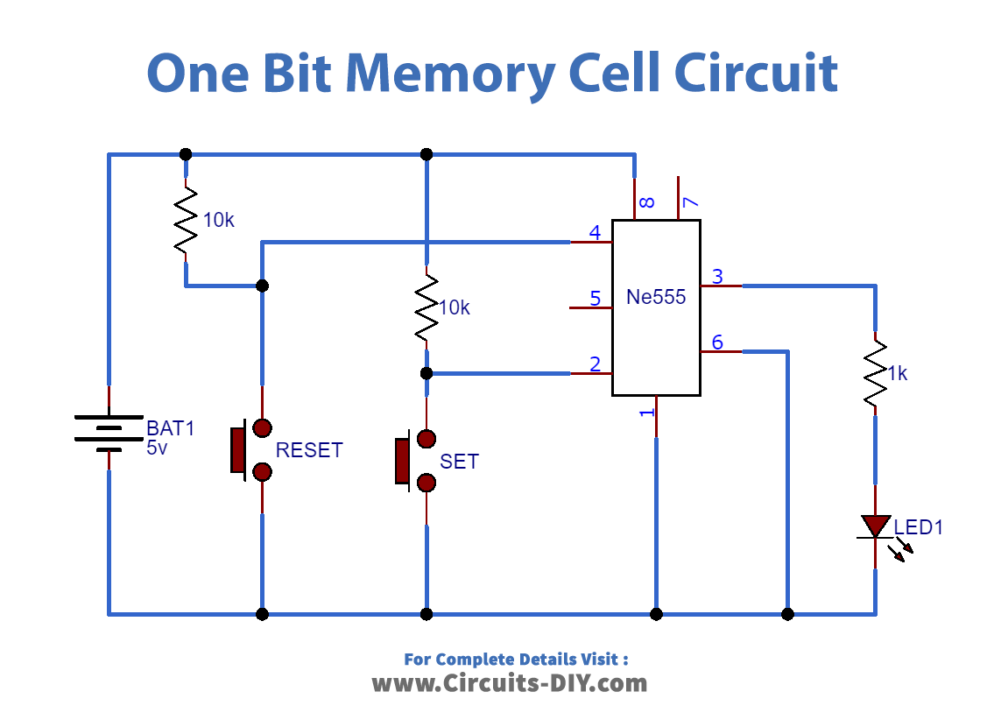
Working Explanation
In the 555 Timer IC, the SR flip flop is present. The S refers to the set pin and the R refers to the reset pin. When both the inputs of the SR flip flop are given the low logic, the output goes to the undefined state. As both the inputs of the flip flop are at logic high, the output remains the same as the previous one. When the set pin is at 1 and the reset pin is at 0 then the output of the flip flop is at logic high and it is called the set condition. The threshold pin and the reset pin are connected to the ground through the push button. The output pin is connected to the LED. When the set button is pressed high logic is stored in 555 Timer IC. When the reset button is pressed low logic is stored in the flip-flop of 555 Timer IC.
Application
- The one-bit memory circuit is widely used in microprocessors to store and access data.


